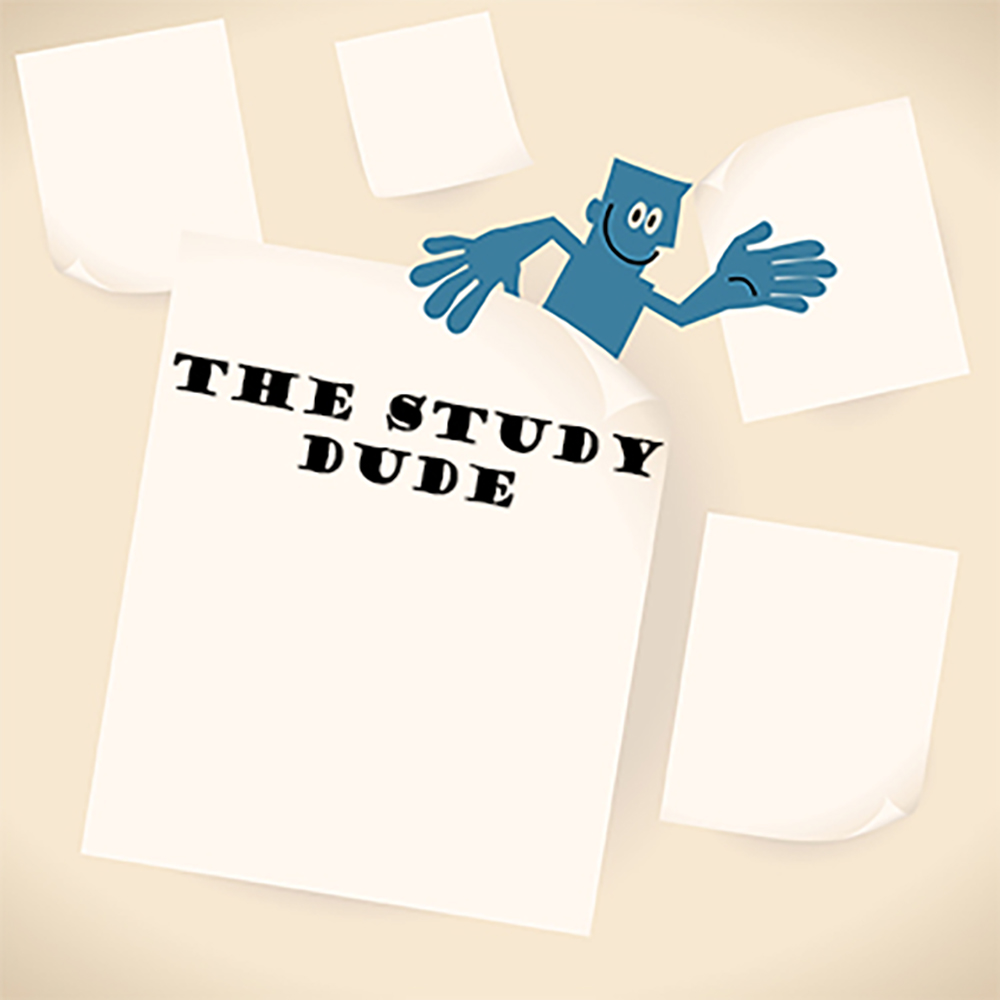 There is nothing more that The Study Dude wants than for you to have gainful employment, reams of extracurricular activities, a social life, and a 4.0 GPA to boot. Think it’s impossible? Well, our friend Cal Newport (2007) thinks you can have it all.
There is nothing more that The Study Dude wants than for you to have gainful employment, reams of extracurricular activities, a social life, and a 4.0 GPA to boot. Think it’s impossible? Well, our friend Cal Newport (2007) thinks you can have it all.
In these articles, as The Study Dude, I’ll try to give you the study tips you need to help make your learning easier. I’ll also give you straight and honest opinions and personal anecdotes?even the embarrassing ones that you wouldn’t ever dare read about from any other study tip guru.
Today’s study tips are based on a reading of Cal Newport’s How to Become a Straight-A Student: The Unconventional Strategies Real College Students Use to Score High While Studying Less (2007).
How Do the Dudes at MIT Wade Through so Much Reading? The Triage Approach
Ever have your jaw drop at how much reading Ivy League schools assign–and at the endless readings students somehow complete? If you are taking five classes in addition to extracurricular activities, working full-time and taking academics on the side, or attending graduate studies and feeling overwhelmed by the mountains of readings, then the following system may work wonders for you:
– Triage your readings. In other words, separate them into three groups: one, to always read; two, to skim only; and three, to not read but to bring to the lectures and mark up if discussed.
– The always read books are typically textbooks that contain assigned readings from most (if not all) lectures. They tend to “make an argument” (Newport, 2007, p. 87).
– The skim read only books are typically materials that are not the favoured readings, but tend to be things like speeches, papers, and book chapters. Skim the most important ones of these, and bypass the rest, unless, of course you have time to address them. For the ones you bypass, bring them to the lecture so that you can mark them up with notes when and if they are discussed.
– Readings to skim tend to “describe an event or person” (Newport, 2007, p. 87). Readings to bypass tend to be things like speeches and newspaper articles that just provide additional context.
– What do you do if you are not certain which books of a list are the ones to read as opposed to skim? If you have a list of reading materials, read the ones that have the same subject matter as the lecture title. Skim (or bypass in some cases) the rest. For instance, if Clinton’s Inaugural Address is the lecture topic, read deliberately the material on Clinton’s speeches and only skim the reading on a more general topic such as communications strategies of political leaders.
(Newport, 2007)
The Study Dude urges you to do all of the readings if you have the time and the motivation. It is ideal to examine and study all of your materials in depth, but if you are too far behind in reading, or strapped with some other commitments?such as work that prevents you from keeping up at the pace you desire?perhaps Newport’s methods might help with prioritizing your readings.
Great Strategy for Note-Taking on Readings
The Study Dude tried out Newport’s (2007) advice on how to take notes with readings, and the method seems quite practical. Here are a few highlights:
– Don’t take too many or too few notes?find a balance.
– To find that balance, use a “question, evidence, and conclusion” (Newport, 2007, p. 92) approach.
– Take the notes on your computer, one question, evidence, and conclusion combination per page (or, in other words, each one starting fresh on a new page).
– Take the question from either rewriting the title of the chapter or section or searching the first few sentences.
– Find the conclusion (i.e., the thesis) in the first few paragraphs.
– Skim the reading for points that jump out at you as primarily answering the question (mark them with a pencil and then transfer them to your computer in bullet point form).
– “Label each point with the page number where you found it” (Newport, 2007, p. 94).
– Voila! You now have your question/evidence/conclusion combinations for each major (or even minor, to be thorough) question that arises in the readings.
(Newport, 2007)
The above makes up what is referred to as your study guide. Now for the icing on the cake.
Constructing Practice Exams from Great Notes
Building on the previous note-taking strategy for readings, The Study Dude finds that using the questions, supporting points, and conclusion format brilliant for exam preparation. I can hardly wait to tell you the method Newport recommends for constructing practice exams using the above method for note taking:
– Make practice quizzes for each chapter, first, by taking the larger questions and breaking them into smaller ones or into sizes that at least answer all the material covered (the main ideas and supporting points).
– Compile all your questions into a sheet of paper.
– Go through the questions, answering each one out loud in your head. Pretend you are lecturing in front of an audience or are a guest speaker at an event. Add some music for dramatic flair (or simply write out answers if you are stymied by your surroundings).
– Place checkmarks by the questions that you stumbled with answering. Go back to the study guide to get the correct answer.
– Repeat the process only addressing the questions that you stumbled upon. Keep going through the steps, referring back to your study guide after each pass and then further narrowing down the questions to practice–that is, until they are all perfected.
– For technical subjects such as mathematics, do the problem sets over and over, placing checkmarks beside the ones you had trouble with and then redoing just the problem areas on subsequent pass-throughs.
– For facts, dates, names, and the like, rely on good old flashcards.
(Newport, 2007)
Feel like an aspiring prodigy yet? Well, that’s your destiny, my prodigious friend. And, you can take notes from lectures (and not just readings) using the questions, supporting points, and conclusion format, too. I haven’t tried it, but it looks so awesome that I aim to further hone the tactic.
Final Few Pointers
The Study Dude has heard views that it is wise to take breaks every half hour to hour, with the breaks being five to fifteen minutes long. I studied for half hour stints, taking a fifteen minute break in between, but stopped short during graduate studies, when I just couldn’t fit all my work into this relatively lackadaisical system.
However, the Web site for the IPFW Center for Academic Support and Advancement (as cited in Newport, 2007) states that attention span takes a nosedive after 40 or 50 minutes.
With that in mind, Cal Newport says to study no more than a one hour stint without a break (for which the break should be five to ten minutes long). (ibid)
However, I’ve also seen that it is wise to switch subjects or study activities (such as going from reading to writing or making cue cards) every thirty to forty-five minutes–instead of taking breaks.
So, why not combine both pieces of advice?
The Study Dude recommends studying in two 30 to 45 minute consecutive stints (preferably 45 minutes for sheer endurance’s sake), switching from one subject or academic activity to another after each stint, and then following up the two sessions with a final glorious ten to fifteen minute break. This will keep retention super high while ensuring lots of productivity and, most importantly, providing you with a reward–a pending break with some actual substance. I know you probably deserve some solid down time that five minutes just can’t capture. With that said, if you are like Cal Newport and want lots of free time for extracurricular activities–and a social life to boot–then maybe the accumulation of short five or ten minute breaks instead of fifteen minute chunks might free up a date night or sporting activity later on.
Wait! Don’t forget to purchase a cooking timer if you really want to ensure success with the system (or if you have The Study Dude’s “judging” Myers Briggs personality type).
Lastly, Newport urges you to do your studying as early in the day as can be warranted. For instance, if you have a twenty or thirty minute interval between tasks, fit in a study session. It’s unwise to rely on the long stretches in the evening to do all of your work when earlier on there are lots of opportunities to study–and to free up time for fun later on.
Newport also spends a great of time talking about organizing your studies through list-building. For more on this essential strategy of his system, please consider reading his book.
So, there’s nothing to fear. The Study Dude is determined to make right for you all the wrongs I made in grad school?one A+ at a time.
References
Newport, Cal. (2007). How to become a straight-A student: The unconventional strategies real college students use to score high while studying less. New York, NY: Three Rivers Press.
